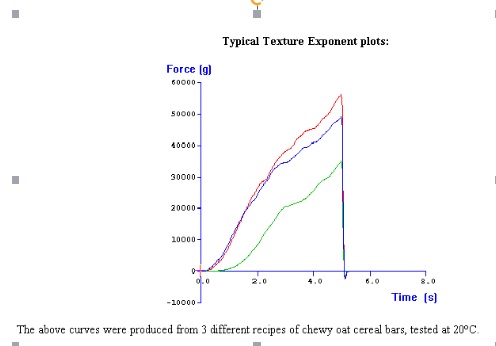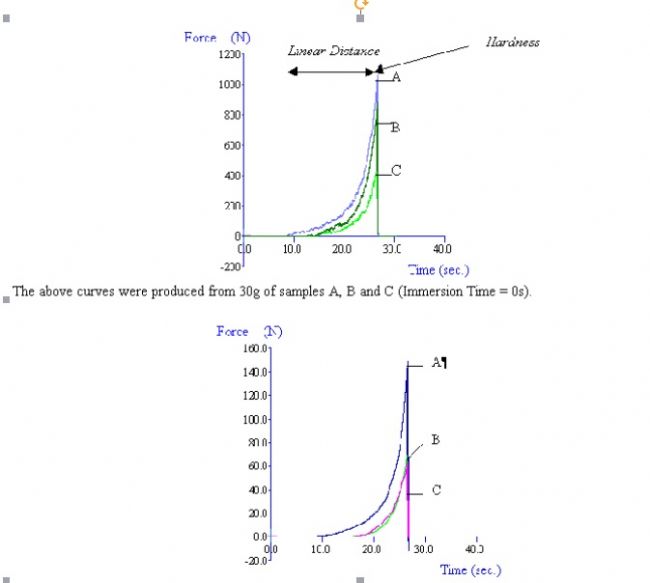Cereals include rice, flour, such as sorghum, corn, millet, sweet potato, etc., mainly provide carbohydrates, protein, dietary fiber and B vitamins, which are the main source of human body heat.
Like other foods rich in fiber and vitamins, whole grains help promote good health. For example, many studies have found that the intake of whole grains is related to the incidence of heart disease. Increasing the intake of whole grains can reduce the incidence of heart disease by an average of 26%. Therefore, the quality of cereals is more critical to our health.
For the determination of food hardness, the focus is mainly on the more conventional methods. For example, Yuan Cuiping et al. [1] compared the near-infrared (NIR) and single-grain grain characteristics tester (SKCS) in the study of wheat grain hardness. The difference in the determination of hardness by the method indicates that the SKCS method does not require milling treatment, and can better reflect the uniformity and degree of mixing of the sample. It is a method for determining the hardness of the grain with good repeatability and stability. Due to the complicated operation of the traditional method and the high requirements on the operator, it has become a research hotspot to seek new and faster measurement methods.
Due to its simple structure, convenient operation, high detection accuracy and stable performance, Baosheng TA.XTC texture analyzer has gradually become a common tool for researching food properties in universities, research institutes, food industry and food institutions in China. The use of a texture analyzer to measure grain indicators is not only easy to operate, but also saves time in data processing. The processed graphics can very intuitively reflect the quality of the product.
Share with you the specific application of the Paulson Brand Texture Analyzer to test the hardness of cereals and the crispness of soaked cereals.
Determination of grain hardness:

The grain hardness of the grain was measured using a 5-blade Kramer cutter (HDP/KS5) using a Paulson TA.XTC texture analyzer. The test parameters are: before and during the test, the speed is 2.0 mm/s, the speed after the test is 10.0 mm/s, and the 100 kg force sensor is used. The sample was taken out of the package before the experiment. Cut the sample into a shape that can be placed in the sample box. As the tool cuts the sample, as the penetration depth increases, the force also begins to increase until it is pressed down to the maximum distance. The maximum force at this point can be seen as the hardness of the sample.
The measurement results are shown in the figure. It can be seen from the picture that the force of sample A is the largest, the force of sample B is the second, and the sample C is the smallest.
Determination of the crispness of soaked cereals:

In this experiment, the crispness of the soaked grain was measured using the Ottawa TA.XTC texture analyzer using the Ottawa laboratory chamber (TA/OTC). The test parameters are: before and during the test, the speed is 5.0 mm/s, the speed after the test is 10.0 mm/s, and the 100 kg force sensor is used. The sample was taken out of the package before the experiment and weighed into several equal parts. The weight is important and should be sufficient to test 50% of the chamber volume. Once the piston is in contact with the sample, the force begins to stabilize at a rate that increases. As the depth of depression increases, the force begins to increase significantly.
Due to the crispness of the sample, many peaks can be seen on the image. The maximum force value indicates that the hardness and slope of the sample reflect the crispness of the sample. The higher the slope, the higher the crispness. The results show a trend: the longer the soaking time, the better the softness and the worse the crispness. Among the three types of cereals, A has greater hardness and crispness than B and C.
We hope that the information we provide will be helpful for your research, and we welcome you to contact us to learn more about our product information. Finally, thank you very much for your support and wish you a happy life and a smooth job!
1. Yuan Cuiping, Tian Jichun, Wang Yongjun.Comparative Study on Determination Methods of Grain Hardness of Wheat Varieties[J].Journal of Triticeae Crops,2004:(02).
Anti-Dust Smog Virus Kn95 Mask
Kn95 Half Face Mask,50pcs Kn95 Face Mask,Anti-Dust Smog Virus Kn95 Mask,Anti-Dust Smog Virus Kn95 Mask
Dongguan Keyutai Mask Co., Ltd. , https://www.maskkytai.com